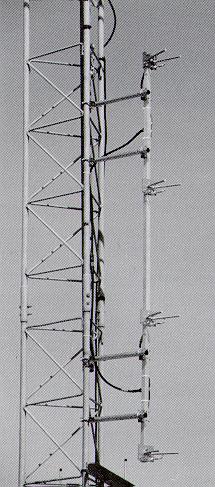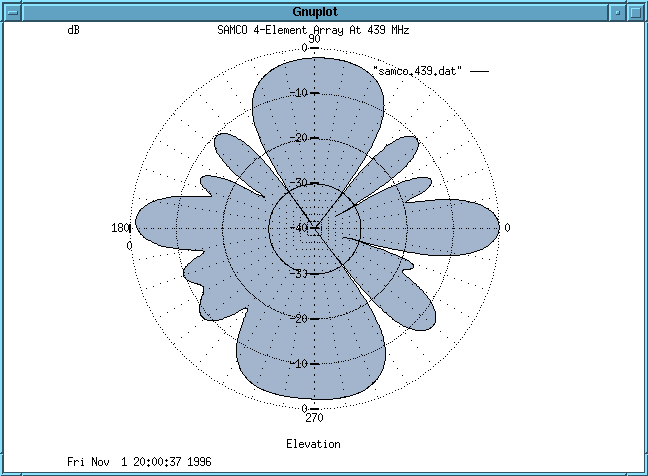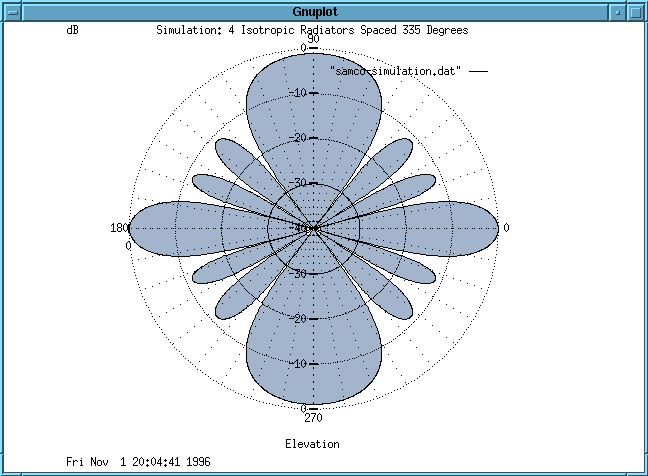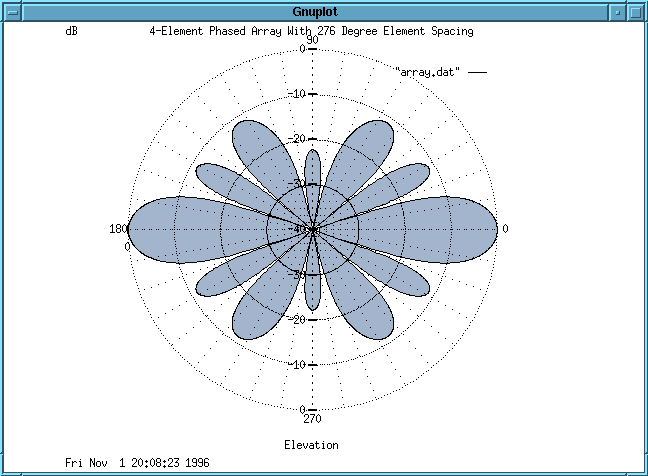

The Brookdale Amateur Radio Club purchased a SAMCO model SAM-410/H-4 horizontally polarized, omni-directional UHF base antenna as a replacement for the poor performing WB0QCD Alford-Slot antenna in the Club's 70-cm ATV repeater system. SAMCO Antennas, Inc. was kind enough to provide a 20% educational price reduction along with a 6% cash-in-advance discount making the purchase of the antenna quite attractive.
The SAM-410/H series is designed for commercial applications between 400 MHz and 512 MHz. It was originally designed for GTE corporation, and consists of an array of 'V' shaped radiators stacked vertically on a support pipe. Several different models are available consisting of two, four, or eight stacked bays. We selected a four-bay model for economic reasons. The advertised gain of the model selected is 6 dBd. The frequency range specified to the manufacturer was 425 MHz to 444 MHz.
As with the WB0QCD Alford-Slot antenna, radiation pattern data collected on this antenna at a professional antenna range contradicted advertised performance claims. The following is elevation pattern data taken of the SAMCO SAM-410/H-4 antenna at 439 MHz:

Major lobes were found to exist at the zenith and nadir of the antenna which are much too great in amplitude to support a 6 dBd gain claim at 0 and 180 degrees (the horizon). These results were so poor that the validity of the measured pattern data was seriously questioned. After all, this was a commercial antenna system originally designed for GTE corporation, not something built in someone's garage without proper test equipment.
In order to verify the pattern data measured was correct and that the antenna was indeed performing as designed, an antenna radiation simulation program was developed by KD2BD for execution under the Linux operating system. The following is simulated elevation pattern data of an antenna system consisting of four isotropic radiators with 335 degree spacing:

These patterns closely match those measured on the antenna range with respect to amplitude and placement of nulls and lobes thereby verifying that the SAMCO antenna was indeed performing as designed. Through software interations, it was discovered that if the spacings between the individual radiators were changed, a much cleaner radiation pattern could be achieved. The following is simulated elevation pattern data of an antenna system consisting of four isotropic radiators with 276 degree spacing:

These results indicate a substantial improvement in the performance of the SAMCO antenna by simply modifying the spacing between individual bays. With the permission of the manufacturer, the antenna was modified with the element spacings indicated above and new patterns were run on the antenna range. The measured radiation patterns were found to closely approximate those predicted through software, although the measured gain was still below 6 dBd.
As a result of our findings, the SAMCO model SAM-410H-4 was returned to the manufacturer for a full refund. Not only was the gain found to be far below advertised claims, but the antenna's feed harness used a total of 12 'N' connectors, each of which represents a potential intermodulation distortion hazard. The minor gain improvement this antenna provided over the WB0QCD antenna did not justify the labor costs of swapping the antennas.
|
|
John Magliacane |